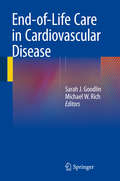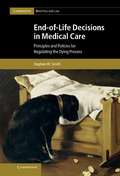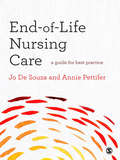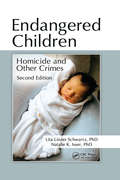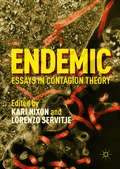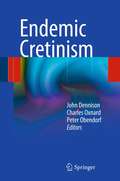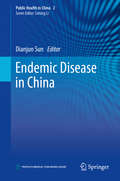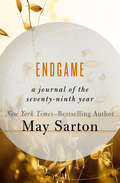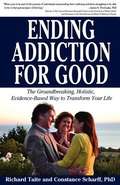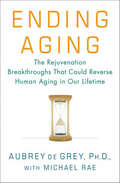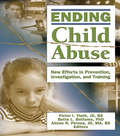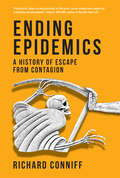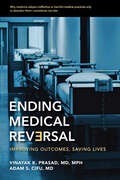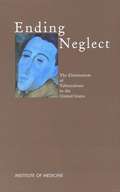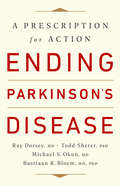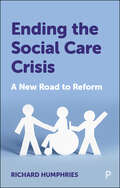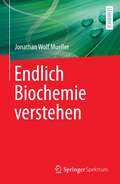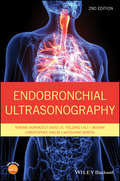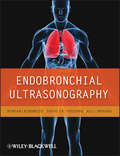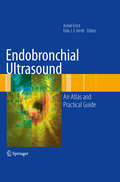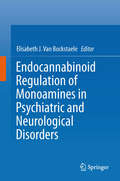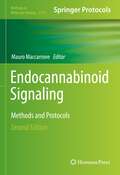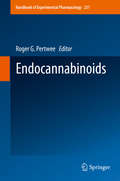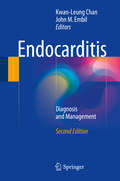- Table View
- List View
End-of-Life Care in Cardiovascular Disease
by Sarah J. Goodlin Michael W. RichEnd-of-life issues in cardiology are becoming increasingly important in the management of patients in the cardiac unit, but there is frequently a lack of understanding regarding their impact on cardiology practice. The cardiac unit is increasingly becoming the location whereby a number of key clinical decisions relating to end-of-life care are being made, such as the decision to remove medications, the appropriate removal of cardiac devices, the management of do not resuscitate orders and the requirement for other cardiac procedures in light of the management of the terminally ill cardiac patients. Those working in palliative care need input from the cardiovascular team as the cardiologist is frequently still managing these patients until they are moved to the hospice. That this move into a hospice is often delayed until the very last moment, there is considerable onus on the cardiovascular management of these patients to be much broader in scope and take account of some of the more palliative medical decisions needed in this group of patients. This concise reference will detail the practical issues open to cardiovascular physicians and those medical professionals who manage patients reaching the end of their life from a cardiology perspective. It will detail the full management options open to them to ensure that their practice is in line with the requirements of the patient nearing the end of their life whether the cause be cardiovascular in origin or who need appropriate management of secondary cardiovascular symptoms. It will also include the various ethical, cultural and geographical issues that need to be considered when managing these patients.
End-of-Life Decisions in Medical Care
by Stephen W. SmithThose involved in end-of-life decision making must take into account both legal and ethical issues. This book starts with a critical reflection of ethical principles including ideas such as moral status, the value of life, acts and omissions, harm, autonomy, dignity and paternalism. It then explores the practical difficulties of regulating end-of-life decisions, focusing on patients, healthcare professionals, the wider community and issues surrounding 'slippery slope' arguments. By evaluating the available empirical evidence, the author identifies preferred ways to regulate decisions and minimise abuses at the end of life, and outlines an ethical theory which can provide practical guidance for those engaged in end-of-life decisions.
End-of-Life Nursing Care: A Guide For Best Practice
by Mrs Joanna De Souza Annie PettiferStudents and newly qualified staff make up much of the workforce delivering end-of-life care but, because end-of-life care can be both technically challenging and emotionally demanding, it is an aspect of nursing that can cause considerable anxiety. This very accessible, straightforward book helps to allay those concerns and enables pre-registration students to prepare confidently for the challenges they will face when they are caring for dying patients and supporting their families. Each chapter is based on a different and realistic scenario - reflecting a range of circumstances - to demonstrate the essential generic knowledge and skills they need to develop, and draws out the important practical and theoretical issues students should consider and address if patients and their families are to receive the best possible care. Written by two experienced palliative care lecturer/practitioners, and mapping closely to the NMC's 2010 domains, the book is tailored to the needs of student nurses working with adult patients. It explores the importance of their role in end-of-life care and how this interfaces with the roles of other multidisciplinary professionals involved in the care of their patients. It will also be helpful to students of other health-care professions and support newly-qualified health-care professionals working in adult health.
Endangered Children: Homicide and Other Crimes, Second Edition
by Lita Linzer Schwartz Natalie K. IsserFrom infancy onward, children are in danger from many sources, including parental and sibling abuse, drug abuse and mental illness in the home, parental neglect, and poverty. Removing an at-risk child from a troubled environment brings on a host of new concerns and is not always a panacea. Endangered Children: Homicide, and Other Crimes, Second Edi
Endemic
by Kari Nixon Lorenzo ServitjeThis book develops a new multimodal theoretical model of contagion for interdisciplinary scholars, featuring contributions from influential scholars spanning the fields of medical humanities, philosophy, political science, media studies, technoculture, literature, and bioethics. Exploring the nexus of contagion's metaphorical and material aspects, this volume contends that contagiousness in its digital, metaphorical, and biological forms is a pervasively endemic condition in our contemporary moment. The chapters explore both endemicity itself and how epidemic discourse has become endemic to processes of social construction. Designed to simultaneously prime those new to the discourse of humanistic perspectives of contagion, complicate issues of interest to seasoned scholars of science and technology studies, and add new topics for debate and inquiry in the field of bioethics, Endemic will be of wide interest for researchers and educators.
Endemic Cretinism
by Peter Obendorf John Dennison Charles OxnardResponding to a renewed interest in the growing problem of iodine deficiency worldwide, Drs. Charles Oxnard and Peter Obendorf, along with experienced translator and anatomist John Dennison, take a fresh look at the classic text, Der endemische Kretinismus, published in 1936 by Springer. Translated here for the first time into English, this landmark text will be a welcome resource for researchers confronting the problem of iodine deficiency. Oxnard and Obendorf point out that there is very little detailed knowledge or numerical data on cretinism available in the English-speaking world. In addition, highly-renowned Professor Basil S. Hetzel, recently-retired World Health Organization Chairman of the International Council for Control of Iodine Deficiency Disorders, published in 2009 with Dr Chen Zu-pei on the resurgence of iodine deficiency in China. Indeed, throughout the entire developing world there may be as many as two billion people at risk to iodine deficiency; perhaps three quarters of a billion have goiter, and ten million may be cretins. Even in developed countries, iodine deficiency is re-emerging (as in New South Wales in 19% of children) with the result of significantly reduced numbers of gifted children (though this is not cretinism per se). Certain to be of significant interest to a wide range of researchers, health providers and professionals, including government health administrators, this English translation of Endemic Cretinism is a major contribution to the literature.
Endemic Disease in China (Public Health in China #2)
by Dianjun SunThe book focuses on the iodine deficiency, endemic fluorosis, endemic arsenic poisoning, Kashin-Beck disease and Keshan disease which are five kinds of national key endemic diseases, a total of six chapters, comprehensively systematically introduces the information of five kinds of endemic diseases, including the epidemic characteristics, clinical manifestation, diagnosis standards, and the current control situation, preventive strategy, working experience, and successful control cases, etc.Endemic disease is confined to certain areas, of which there are dozens in Chinese inland, in which there are eight types been listed in the national key control endemic diseases. Endemic diseases are serious in China, and have wide distribution, weight illness and a large threatened population. China has made great achievements on the endemic diseases prevention and control, and also has accumulated rich experiences of the prevention and treatment, summed up some complete and effective preventive strategy, which based on the characteristics of endemic diseases epidemic and prevention work.Dr. Dianjun Sun is the Director of Center for Endemic Disease Control,Chinese Center for Disease Control and Prevention, Harbin, China. He is also a professor of Harbin Medical University, China.
Endgame: A Journal of the Seventy-Ninth Year
by May SartonAs she battles debilitating illnesses, May Sarton looks back on her life, cherishes new and old friendships, and finds hope in the brave new world of old age "I always imagined a journal that would take me through my seventy-ninth year," May Sarton writes, "the doors opening out from old age to unknown efforts and surprises." Instead of musing calmly on the philosophical implications of aging, the writer found herself spending most of her energy battling for her health. Coping with constant pain and increasing frailty, Sarton fears that the end is not far off. The story of what she calls the "last laps of a long-distance runner," this yearlong journal addresses such familiar Sarton topics as her beloved garden, the harshness of Maine winters, and the friendships and intimate relationships that have nurtured and sustained her. She settles some old literary scores and paints a generous portrait of Virginia Woolf, who often shared tea with Sarton during the late 1930s. When illness saps Sarton's ability to type, she dictates into recorders and has the tapes transcribed by devoted assistants. In spite of the loss of independence and the fear that she will never fully recover, she does her best to soldier on, taking pleasure in small things like a good meal; her cat, Pierrot, who loves the rain; and being able to sleep through the night. An enduring inspiration to millions of women, Sarton even finds the courage to achieve again.
Ending Addiction for Good: The Groundbreaking, Holistic, Evidence-Based Way to Transform Your Life
by Richard Taite Constance ScharffThere is hardly a family in the post-industrial world that hasn't been affected in some way by addiction. Yet seeking treatment for a struggling loved one is, for most people, a frightening and overwhelming prospect. Ending Addiction for Good offers a powerful message of hope. Drawing on their own histories of addiction recovery, authors Taite and Scharff examine the unique and highly successful treatment protocol practiced at the Cliffside Malibu Addiction Treatment Center. Using clear and direct language, they look beyond the limits of conventional treatment to show how creating an individualized, evidence-based, and integrated approach that targets the whole person - mind, body, and spirit - not just the addiction, can provide a sure path to recovery. In doing so, they empower both the addict and the families of addicts to begin their recovery. Ending Addiction for Good may well be the most important book dealing with alcoholism and drug addiction to come along in years.
Ending Aging: The Rejuvenation Breakthroughs That Could Reverse Human Aging in Our Lifetime
by Aubrey de Grey Michael RaeMUST WE AGE? A long life in a healthy, vigorous, youthful body has always been one of humanity's greatest dreams. Recent progress in genetic manipulations and calorie-restricted diets in laboratory animals hold forth the promise that someday science will enable us to exert total control over our own biological aging. Nearly all scientists who study the biology of aging agree that we will someday be able to substantially slow down the aging process, extending our productive, youthful lives. Dr. Aubrey de Grey is perhaps the most bullish of all such researchers. As has been reported in media outlets ranging from 60 Minutes to The New York Times, Dr. de Grey believes that the key biomedical technology required to eliminate aging-derived debilitation and death entirely—technology that would not only slow but periodically reverse age-related physiological decay, leaving us biologically young into an indefinite future—is now within reach.In Ending Aging, Dr. de Grey and his research assistant Michael Rae describe the details of this biotechnology. They explain that the aging of the human body, just like the aging of man-made machines, results from an accumulation of various types of damage. As with man-made machines, this damage can periodically be repaired, leading to indefinite extension of the machine's fully functional lifetime, just as is routinely done with classic cars. We already know what types of damage accumulate in the human body, and we are moving rapidly toward the comprehensive development of technologies to remove that damage. By demystifying aging and its postponement for the nonspecialist reader, de Grey and Rae systematically dismantle the fatalist presumption that aging will forever defeat the efforts of medical science.
Ending Child Abuse: New Efforts in Prevention, Investigation, and Training
by Victor I. Vieth Bette L. Bottoms Alison PeronaGet the tools to coordinate a plan in your community!The highly anticipated Ending Child Abuse: New Efforts in Prevention, Investigation, and Training presents an exciting vision: to end or significantly reduce child abuse. Respected social scientists and legal scholars discuss empirically sound short- and long- term multidisciplinary strategies that can be implemented in our society. Innovative and well-established concepts and approaches are clearly presented, such as specialized education, rational preventative methods, effective investigation and prosecution strategies, and the analysis of factors that influence law enforcement investigations and child abuse prevention efforts.Several obstacles stand in the way of the elimination of child abuse, such as the failure to investigate most child abuse reports, inadequate training of frontline child protection professionals, lack of financial resources, and the dilemma that child abuse is not addressed at the youngest ages. Ending Child Abuse: New Efforts in Prevention, Investigation, and Training tackles these problems and others with practical guidelines and aggressive creative strategies that can be applied to every community in the United States. This collection is impeccably referenced and soundly supported with research.Ending Child Abuse: New Efforts in Prevention, Investigation, and Training discusses: implementation of a model curriculum in child advocacy for undergraduate and graduate institutions forensic interview training extensive education of the nation&’s child protection professionals development and funding of prevention programs at the community level educational reforms of Montclair State University in New Jersey designed to better prepare professionals who advocate for children research-based interview techniques with best practice guidelines possible broader social and system-level reforms vertical prosecution of child abuse cases-with a model for its operationEnding Child Abuse: New Efforts in Prevention, Investigation, and Training is an ambitious eye-opening source perfect for social services professionals, mental health professionals, practitioners, researchers, educators, students, and medical and legal professionals who deal with child abuse and children&’s welfare.
Ending Epidemics: A History of Escape from Contagion
by Richard ConniffHow scientists saved humanity from the deadliest infectious diseases—and what we can do to prepare ourselves for future epidemics.After the unprecedented events of the COVID-19 pandemic, it may be hard to imagine a time not so long ago when deadly diseases were a routine part of life. It is harder still to fathom that the best medical thinking at that time blamed these diseases on noxious miasmas, bodily humors, and divine dyspepsia. This all began to change on a day in April 1676, when a little-known Dutch merchant described bacteria for the first time. Beginning on that day in Delft and ending on the day in 1978 when the smallpox virus claimed its last known victim, Ending Epidemics explains how we came to understand and prevent many of our worst infectious diseases—and double average life expectancy. Ending Epidemics tells the story behind &“the mortality revolution,&” the dramatic transformation not just in our longevity, but in the character of childhood, family life, and human society. Richard Conniff recounts the moments of inspiration and innovation, decades of dogged persistence, and, of course, periods of terrible suffering that stir individuals, institutions, and governments to act in the name of public health. Stars of medical science feature in this drama, but lesser-known figures also play a critical role. And while the history of germ theory is central to this story, Ending Epidemics also describes the importance of everything from sanitation improvements and the discovery of antibiotics to the development of the microscope and the syringe—technologies we now take for granted.
Ending Medical Reversal: Improving Outcomes, Saving Lives
by Vinayak K. Prasad Adam S. CifuWhy medicine adopts ineffective or harmful medical practices only to abandon them—sometimes too late.Medications such as Vioxx and procedures such as vertebroplasty for back pain are among the medical "advances" that turned out to be dangerous or useless. What Dr. Vinayak K. Prasad and Dr. Adam S. Cifu call medical reversal happens when doctors start using a medication, procedure, or diagnostic tool without a robust evidence base—and then stop using it when it is found not to help, or even to harm, patients.In Ending Medical Reversal, Drs. Prasad and Cifu narrate fascinating stories from every corner of medicine to explore why medical reversals occur, how they are harmful, and what can be done to avoid them. They explore the difference between medical innovations that improve care and those that only appear to be promising. They also outline a comprehensive plan to reform medical education, research funding and protocols, and the process for approving new drugs that will ensure that more of what gets done in doctors' offices and hospitals is truly effective.
Ending Neglect: The Elimination of Tuberculosis in the United States
by Institute of MedicineTuberculosis emerged as an epidemic in the 1600s, began to decline as sanitation improved in the 19th century, and retreated further when effective therapy was developed in the 1950s. TB was virtually forgotten until a recent resurgence in the U.S. and around the world-ominously, in forms resistant to commonly used medicines.What must the nation do to eliminate TB? The distinguished committee from the Institute of Medicine offers recommendations in the key areas of epidemiology and prevention, diagnosis and treatment, funding and organization of public initiatives, and the U.S. role worldwide. The panel also focuses on how to mobilize policy makers and the public to effective action.The book provides important background on the pathology of tuberculosis, its history and status in the U.S., and the public and private response.The committee explains how the U.S. can act with both self-interest and humanitarianism in addressing the worldwide incidence of TB.
Ending Parkinson's Disease: A Prescription for Action
by Michael S. Okun Ray Dorsey Todd Sherer Bastiaan R. BloemIn this "must-read" guide (Lonnie Ali), four leading doctors and advocates offer a bold action plan to prevent, care for, and treat Parkinson's disease-one of the great health challenges of our time. Brain diseases are now the world's leading source of disability. The fastest growing of these is Parkinson's: the number of impacted patients has doubled to more than six million over the last twenty-five years and is projected to double again by 2040. Harmful pesticides that increase the risk of Parkinson's continue to proliferate, many people remain undiagnosed and untreated, research funding stagnates, and the most effective treatment is now a half century old.In Ending Parkinson's Disease, four top experts provide a plan to help prevent Parkinson's, improve care and treatment, and end the silence associated with this devastating disease.
Ending the Social Care Crisis: A New Road to Reform
by Richard HumphriesWhat lies behind England’s crisis in adult social care, why has real change been so hard and what can be done? Ensuring effective, sustainable and affordable care and support for people of all ages is an urgent public policy challenge. This vital book outlines a different vision of social care as an essential part of the country’s economic and social infrastructure that enables people to live good lives. Drawing on the history of social care, international comparisons and lived experience, it sets out a different road to reform that will secure political traction and public support for change.
Endlich Biochemie verstehen
by Jonathan Wolf MuellerDieses Buch beantwortet brennende Fragen nach dem (molekularen) Sinn des Lebens und macht Lust auf mehr. Was ist es denn „was die Welt, im Innersten zusammenhält“. Das Buch ist als Lehrbuch konzipiert und macht übergeordnete Konzepte der Biochemie mit einfachen Bildern begreifbar. Die Konzepte oder spannenden Fragen der Kapitel werden mit viel Witz und über einfache Eselsbrücken den Studierenden näher gebracht.
Endlich schwanger: Ein Ratgeber für Paare mit Kinderwunsch
by Sebastian FindekleeWünschen Sie sich als Paar schon länger ein Kind und es „klappt einfach nicht“?Dieser Ratgeber gibt Ihnen als Frau und Mann Mut, den Wunsch nach einer Schwangerschaft erfüllen zu können. Der erfahrene Arzt und Reproduktionsmediziner gibt Ihnen hilfreiche Tipps aus der Praxis und stellt moderne Behandlungsverfahren vor. Verständlich geschrieben und wissenschaftlich fundiert erfahren Sie mehr über Ursachen, Diagnostik bei Kinderlosigkeit und bewährte Therapieverfahren und Methoden, u.a. ERA Trio-Test oder Polkörperdiagnostik. Auch auf weniger bekannte Methoden wird eingegangen. Dabei erfahren Sie auch, welchen Einfluss biologische wie seelische Komponenten auf eine Schwangerschaft haben können.Geschrieben für alle Paare mit dem Wunsch nach einem eigenen Kind, aber auch für interessierte Angehörige sowie alle Gynäkologinnen und Gynäkologen lesenswert.
Endobronchial Ultrasonography
by Noriaki Kurimoto Ali I. Musani Katsuhiko Morita David I. Fielding Christopher KnieseEndobronchial ultrasonography (EBUS) is an exciting and still developing diagnostic tool that has added significantly to the diagnosis and staging of lung cancer and other thoracic diseases. Co-authored by one of the technology's pioneers, this book helps the reader to use EBUS to diagnose and stage lung cancer and a variety of different tumours of the chest region. The second edition of Endobronchial Ultrasonography covers all of the standard techniques and the very latest developments and guidelines involved in EBUS, combining two common procedures, bronchoscopy and real-timeultrasonography, allowing physicians to obtain precise biopsies of lymph nodes and masses within the chest cavity.
Endobronchial Ultrasonography
by Noriaki Kurimoto David I. K. Fielding Ali I. MusaniEndobronchial ultrasonography (EBUS) is an exciting new diagnostic tool that has added significantly to the diagnosis and staging of lung cancer and other thoracic diseases. This book is co-authored by one of the technology's pioneers and will help the reader to use EBUS to diagnose and stage lung cancer and a variety of different tumours of the chest region. Endobronchial Ultrasonography covers all of the standard techniques and the new developments involved in EBUS as it combines two common procedures, bronchoscopy and real-time ultrasonography. This allows physicians to obtain precise biopsies of lymph nodes and masses within the chest cavity. Over 250 high quality colour digital images are featured throughout the book to illustrate the different applications of EBUS, complemented by specific case studies. This book is accompanied by a companion website featuring over 30 video clips cited in the text.
Endobronchial Ultrasound
by Felix Jf Herth Armin ErnstEndobronchial ultrasound has received explosive attention amongst pulmonologists, thoracic surgeons and gastroenterologists and the procedure is increasingly being performed. Even though the technology has been in use for over 10 years, technical modifications have just recently lead to the ability for near ubiquitous use. The editors and contributors have all been active in the field for years, are well published and certainly are considered opinion leaders and well-traveled teachers, having offered many courses in bronchoscopy and endobronchial ultrasound.
Endocannabinoid Regulation of Monoamines in Psychiatric and Neurological Disorders
by Elisabeth J. Van BockstaeleThe past decade has seen tremendous growth in the study of cannabinoid receptor signaling in brain. The impact and consequences of cannabinoid modulation of monoaminergic (dopamine, norepinephrine, and serotonin) circuits is becoming more clear. Scientists have shown significant interaction between these two systems in a variety of psychiatric and neurological disorders such as affective disorders, multiple sclerosis, and pain or pain disorders. The overarching goal of Endocannabinoid Regulation of Monoamines in Psychiatric and Neurological Disorders is to provide current information on advances in the field of endocannabinoid signaling and potential therapeutic applications with a particular emphasis on monoaminergic circuits.
Endocannabinoid Signaling: Methods and Protocols (Methods in Molecular Biology #2576)
by Mauro MaccarroneThis second edition provides new and updated chapters detailing all major elements of the ECB system. Chapters guide readers through identification of drug targets, electrophysiology, computational chemistry, and machine learning. Written in the successful Methods in Molecular Biology series format, chapters include introductions to their respective topics, lists of the necessary materials and reagents, step-by-step, readily reproducible protocols, and notes on troubleshooting and avoiding known pitfalls. Comprehensive and cutting-edge, Endocannabinoid Signaling: Methods and Protocols, Second Edition is a valuable resource for all researchers interested in learning more about this important and developing field.
Endocannabinoids
by Roger G. PertweeThere is currently considerable interest in the development of medicines that would enhance endocannabinoid-induced "autoprotection", for example through inhibition of endocannabinoid metabolizing enzymes or cellular uptake processes or that would oppose endocannabinoid-induced "autoimpairment". This volume describes the physiology, pathophysiology and pharmacology of the endocannabinoid system and potential strategies for targeting this system in the clinic.
Endocarditis
by Kwan-Leung Chan John M. EmbilThis new addition will provide an update on the current prophylaxis guidelines, the new diagnostic approach in the detection of the disease, the proposed schemas to predict prognosis, and the new treatment strategies to improve the outcome of patients afflicted with this serious condition. Endocarditis is a serious disease with ahigh rate of morbidity and mortality. The in-hospital mortality remains at 10-20%. The poor outcome ofpatients with this condition is due in large part to the delay in making thediagnosis which frequently can be elusive. As a result of its wide spectrum of manifestations, endocarditis canmimic many different conditions ranging from stroke to renal failure. In order to minimize the delay in diagnosis,clinicians need to always be mindful of the possibility that endocarditis maybe the cause of the symptoms. There have been ongoing efforts in thedevelopment of molecular probes and new imaging techniques to improve ourability to identify the disease early and reliably. New treatment strategies have been studiedwith the aim to prevent complications and to improve survival. Thestructure of the previous edition is preserved. The book is divided into three sections with the first section coveringthe historical perspective and basic principles, the second section dealingwith the diagnosis and management approaches and the last section on specificclinical situations that pose management dilemmas. All the chapters will be updated to include newinformation from the recent studies. Inparticular, the approach to the use of antibiotic prophylaxis will beextensively revised to present and discuss the implications of the currentguidelines from different national societies including the American HeartAssociation and the British Society for Antimicrobial Chemotherapy. This update is timely and should be ofinterest to all clinicians involved in the care of patients with this seriousdisease. This new edition will be a good resource forinternists, infectious disease specialists, cardiologists and cardiac surgeonsalike .
